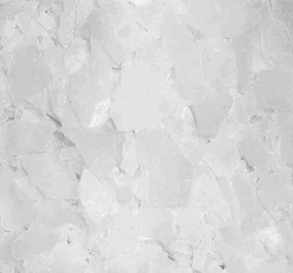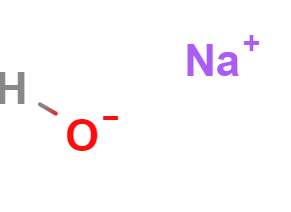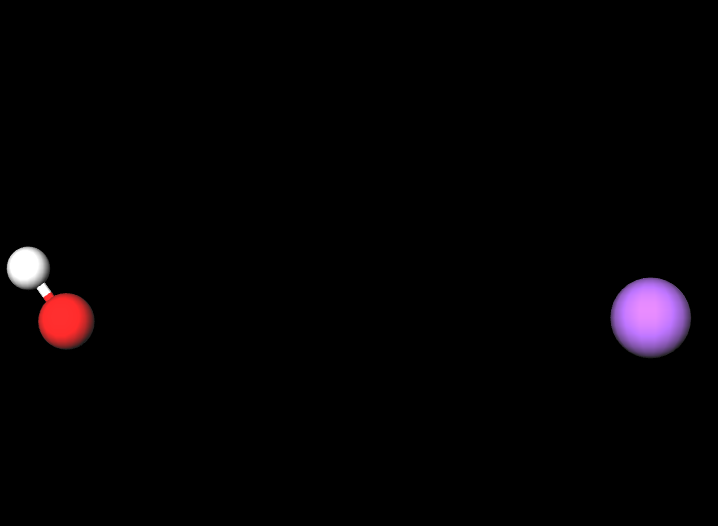E524 (Sodium hydroxide) is a chemical compound, it occurs in the form of solid white flakes, white beads, white flake block or transparent liquid with strong alkalinity and corrosivity (to fibers, skin, glass and ceramics) that are easily soluble in water and exhibit deliquescence (absorbing atmospheric moisture and tending to dissolve) when exposed to air.
The name defines the structure of the molecule:
- 'sodium' is a chemical element with the symbol Na (from the Latin 'natrium').
- 'Hydroxide' refers to the hydroxide ion (OH-), which consists of a hydrogen atom and an oxygen atom held together by a covalent bond.
The synthesis of sodium hydroxide typically takes place on an industrial scale and involves the electrolysis of a sodium chloride solution (brine). Here is a simplified version of the process:
- Sodium chloride (NaCl), also known as table salt, is dissolved in water to form a brine solution. This solution is then subjected to electrolysis, a process that uses an electric current to cause a non-spontaneous chemical reaction.
- During electrolysis, sodium ions (Na+) migrate to the cathode (negative electrode), where they gain electrons to form sodium atoms. Chloride ions (Cl-) migrate to the anode (positive electrode), where they lose electrons to form chlorine gas.
- Sodium atoms at the cathode react immediately with water to form sodium hydroxide (NaOH) and hydrogen gas.
It appears in the form of white flakes.

What it is used for and where
Commonly known as caustic soda (in the solid phase), it has a variety of applications depending on the quantity and associated components.
Sodium hydroxide can be used for guided hydrolysis (e.g. saponification) from the base of esters, amides and alkyl halides.
Food
Ingredient listed in the European food additives list as E524, acidity regulator.
Cosmetics
Denaturant. Small ionic or polar molecule inserted into formulations that interacts with protein groups, modulating the properties of the solution to modify it for specific applications.
pH adjuster. This ingredient tends to restore the pH of a cosmetic formulation to its optimal value. The correct pH value is an essential determinant for lipid synthesis in the stratum corneum. The average physiological pH value of the face ranges between 5.67 and 5.76. The hair fibre has a pH value of 3.67.
It also serves to neutralize the undesirable effects of certain ingredients. In creams, Carbomer.
Other uses
- Toothpastes: used to adjust the pH, acidity
- Olives: in a 2/3% solution it removes the taste of bitterness
- Artificial silk: preparation
- Dyes: synthesis process
- Paper: reagent. Relevant in the different subsequent steps of the bleaching process of the brown pulp resulting from the pulping process, including oxygen delignification, oxidative extraction and simple extraction.
- Corn pretreatment
- Food additive emulsifier
- Industrial cleaning agent, it is added to water, heated and then used to clean equipment, storage tanks, etc. It can dissolve grease, oils, fats and protein-based deposits. It can dissolve grease, oils, fats and protein deposits.
- Petroleum. Used to explore, produce and process oil and natural gas.
- Bleach production. Used to make bleach, as a control of mould and fungus in domestic environments.
- In the production of washing machine detergents, the sodium hydroxide base is one of the most aggressive chemicals for cleaning washing machines and is also present in rust inhibitors and stain removers.
- Other applications: blanching of poultry, thickening of ice cream, chemical washing or peeling of fruit and vegetables, chocolate and cocoa processing, production of caramel colourings.
Sodium hydroxide studies
Optimal typical characteristics of the commercial product sodium hydroxide powder
| Appearance | Solid white flakes, white beads, white flake block |
| Boiling point | 1,388 °C (2,530 °F; 1,661 K) |
| Melting point | 318 °C (604 °F; 591 K) |
| Density | 2.13 g/cm3 |
| NaOH (%min) | 99 |
| Na2CO3(%max) | 0.8 |
| NaCl (%max) | 0.05 |
| Fe2O3(%max) | 0.005 |
| Solubility in water | 418 g/L (0 °C) 1110 g/L (20 °C) 3370 g/L (100 °C) |
- Molecular Formula: NaOH HNaO
- Molecular Weight: 39.997 g/mol
- UNII: 55X04QC32I
- CAS: 1310-73-2 8012-01-9 1418731-95-9
- EC Number: 215-185-5 923-604-4
- UNII 55X04QC32I
- DSSTox Substance ID: DTXSID0029634
- PubChem Substance ID 329824595
- MDL number MFCD00003548
- InChI=1S/Na.H2O/h;1H2/q+1;/p-1
- InChl Key HEMHJVSKTPXQMS-UHFFFAOYSA-M
- SMILES [OH-].[Na+]
- IUPAC sodium;hydroxide
- ChEBI 32145
- ICSC Number 0360
- NSC Number 135799
- RTECS Number WB4900000
- UN Number 1823 1824
Synonyms:
- Caustic soda
- Sodium hydrate
- Soda lye
- White caustic
- Hydroxyde de sodium
- Natriumhydroxyde
- Sodium hydroxide dimer
- White caustic solution





